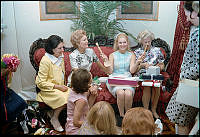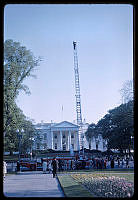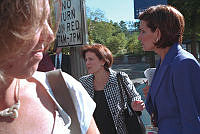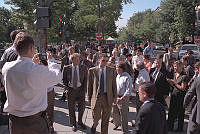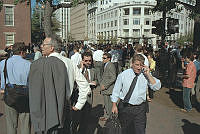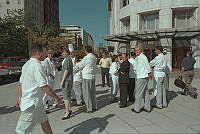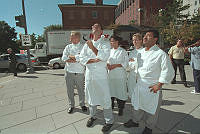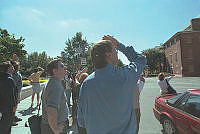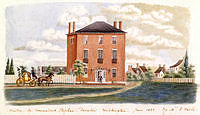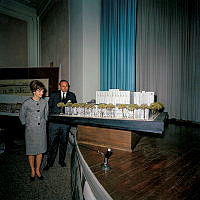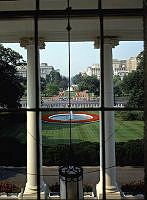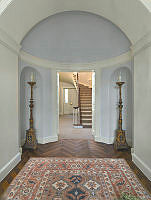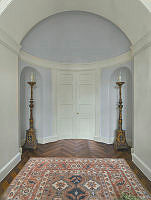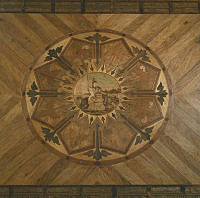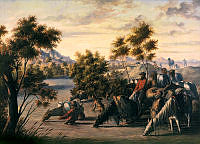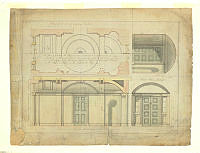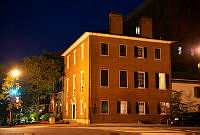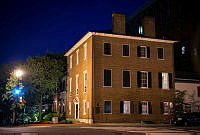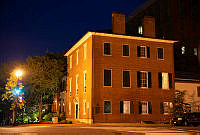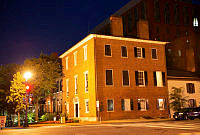Rubenstein Center Scholarship
Anti-War Protests of the 1960s-70s

Protestors gather in front of the White House on Pennsylvania Avenue in 1966 to protest the Vietnam War.
The Vietnam anti-war movement was one of the most pervasive displays of opposition to the government policy in modern times. Protests raged all over the country. San Francisco, New York, Oakland, and Berkeley were all demonstration hubs, especially during the height of the war in the late 1960s and early 1970s. But Washington, D.C. remained one of the most visible stages for this mass dissent of the government’s decisions regarding the war. For example, the White House response that the war was going well after the Tet Offensive in 1968 began to be doubted. All throughout the movement people congregated on the Ellipse, the foot of the U.S. Capitol, and the National Mall by the thousands.
Protesters also used a far more personal venue. Lafayette Park, as the front yard of the White House, played an integral role in bringing the government and the people within reach of each other. The president could not ignore what the people were saying.
The Mayday Protest in 1971 is a prime example of how citizens used the nation’s capital as the ground on which to stage their disapproval. Activists planned to shut down the city completely, handicapping the government and making it impossible for it to function. Protesters camped out in masses on the edges of downtown Washington on May 2, 1971. They chose this place so they would be able to spread out along the entrances to the city as quickly as possible the next day. Traffic was stopped, at least for a few hours, and although it angered some commuters, no one could disregard the strength of the movement. CIA director Richard Helms remarked that Mayday was “one of the things that was putting increasing pressure on the [Nixon] administration to try and find some way to get out of the war.”










